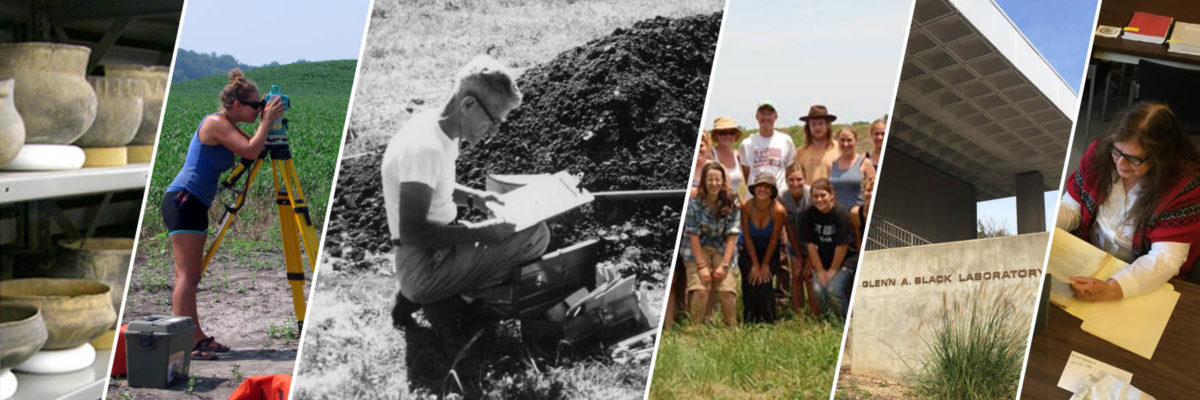
The Curating Angel Rehousing Project, funded through the FY2018 Save America’s Treasures grant program monitored by the Institute of Museum and Library Services and National Park Service, began in earnest during the summer and continued into the fall with a team of between 10 and 15 students and staff. At this writing the curating Angel Team, led by Assistant Curator and anthropology graduate student Amanda Burtt, have rehoused 440 boxes of Angel faunal material. The rehousing project will preserve the collection and make it more accessible to researchers, and it is generating new research directions as we “re-excavate” the site through the rehousing process. Nearly every day we learn something new about the history, preservation and research potential of the legacy Angel collections. We have also started to compile zooarchaeology and bone tool comparative collections as part of the rehousing process. Over the summer and fall we got the word out about the rehousing project. In August, April Sievert, and Amanda Burtt took the Curating Angel project on the road to Angel Mounds as part of the sites birthday celebration. Sievert and Pope presented a paper on Curating Angel at the 63rd Annual Midwest Archaeological Conference, and Amanda Burtt organized a poster symposium, “Rediscovering Angel Mounds” for the 77th Annual Plains Anthropological Conference held in Bloomington, which included posters by 11 crew and staff involved with the project. This fall also marked a huge milestone for IU GBL collections. We have deposited 324 rehoused boxes of Angel Mounds collection materials into the new ALF3 repository! Before the end of the year that number will grow substantially!
Over the summer and fall, the archaeology collections received donations to our education collection from Cheryl Munson. We also received a transfer from the DNR Division of Historic Preservation and Archaeology of the Wea Village Collection derived from three IUPUI field schools (1986-1988) directed by Rick Jones (former state archaeologist) and Neal Turbowitz. In addition to housing archaeological collections for the state of Indiana. The GBL is also a repository for federal archaeological collections. Over the summer and fall, two USDA Hoosier National Forest collections were transferred to the lab for curation. The curation staff also assisted 24 researchers with access to the collections and provided content for two exhibits, the IU Mobile Museum and the 800 Seasons: Change and Continuity in Bloomington, 1818-2018 exhibit, curated by Eric Sandweiss at the Mathers Museum of World Cultures.
On the research front, Pope presented findings from a microwear study she conducted on stone tools from several Central Plains sites at the 77th Annual Plains Anthropological Conference, and will follow this with a submission for publication to the journal Plains Anthropologist. Pope also conducted an assessment and pilot microwear study on a sample of end scrapers from the Mulvey Collection, site 12T4. This collection has great potential to inform on the protohistoric and early historic Wea/Miami trade in hides centered on the Middle Wabash valley. Research on the Black-era excavations at Angel Mounds is ongoing, oriented toward developing a collections-based research project focused on Mississippian house trajectories. Plans are also underway to begin research on the Angel type collections. Finally, Pope launched a project this fall to address the organizational structure of the GBL archaeological collections. One outcome of the collections structure project will be a collections-based publication, Indiana Archaeology through the Glenn A. Black Laboratory of Archaeology Collections, which will aid future research and research-based exhibits that will enhance and support the newly envisioned IU Museum of Archaeology and Anthropology.

Melody Pope, Curator of Collections

